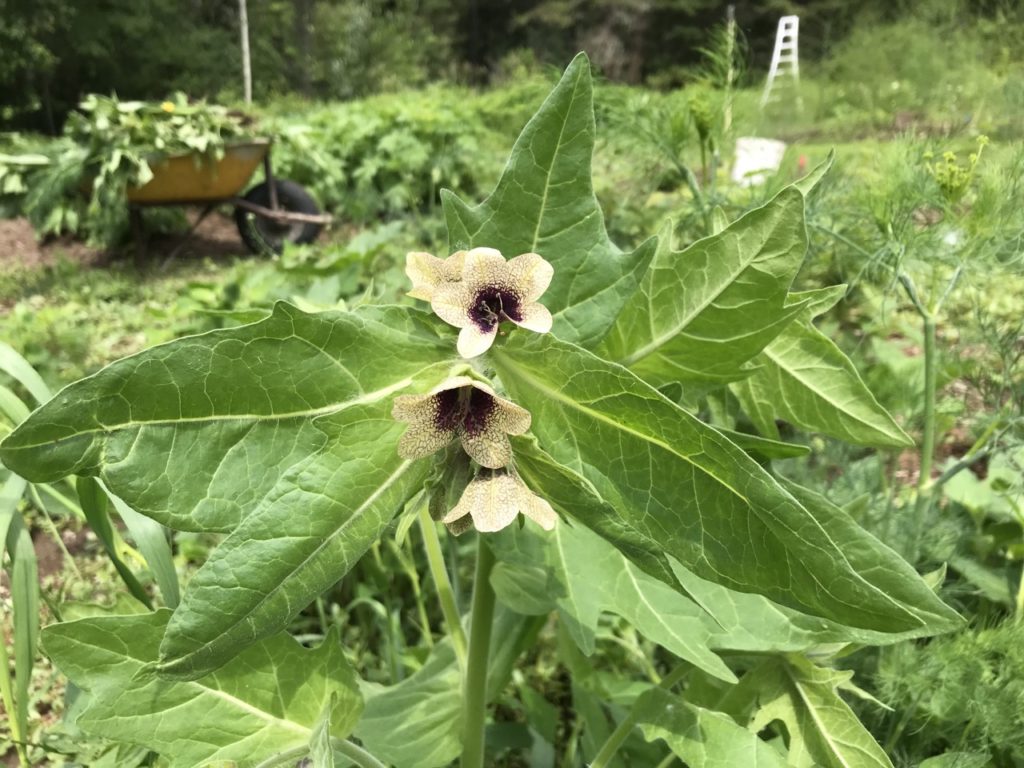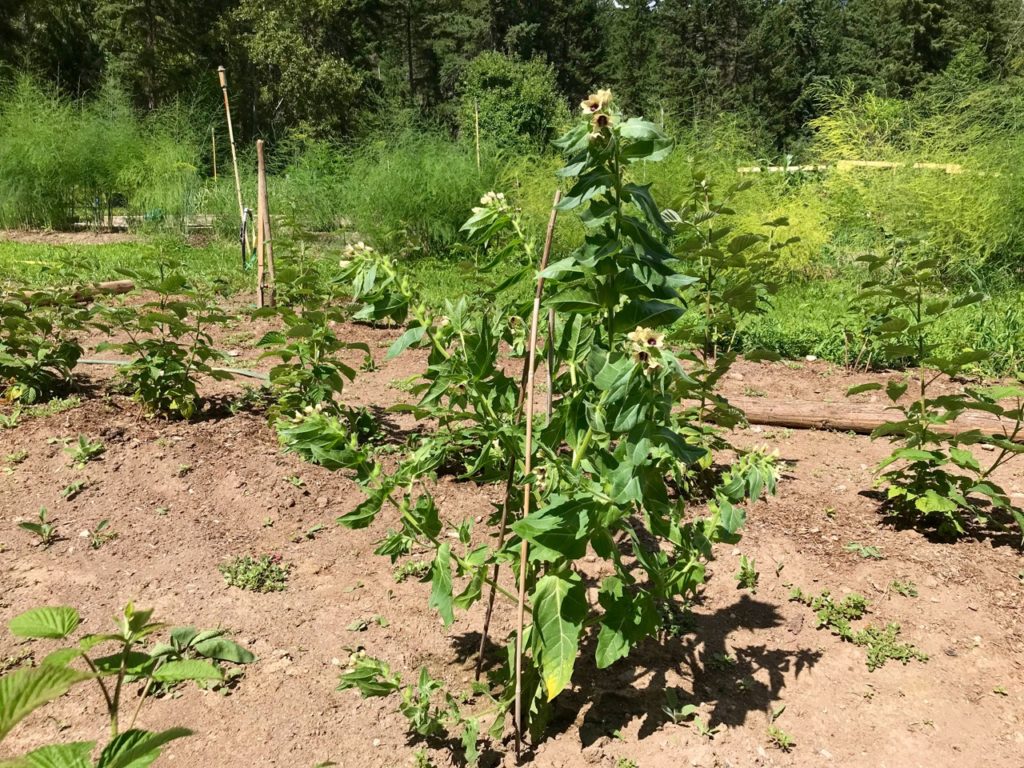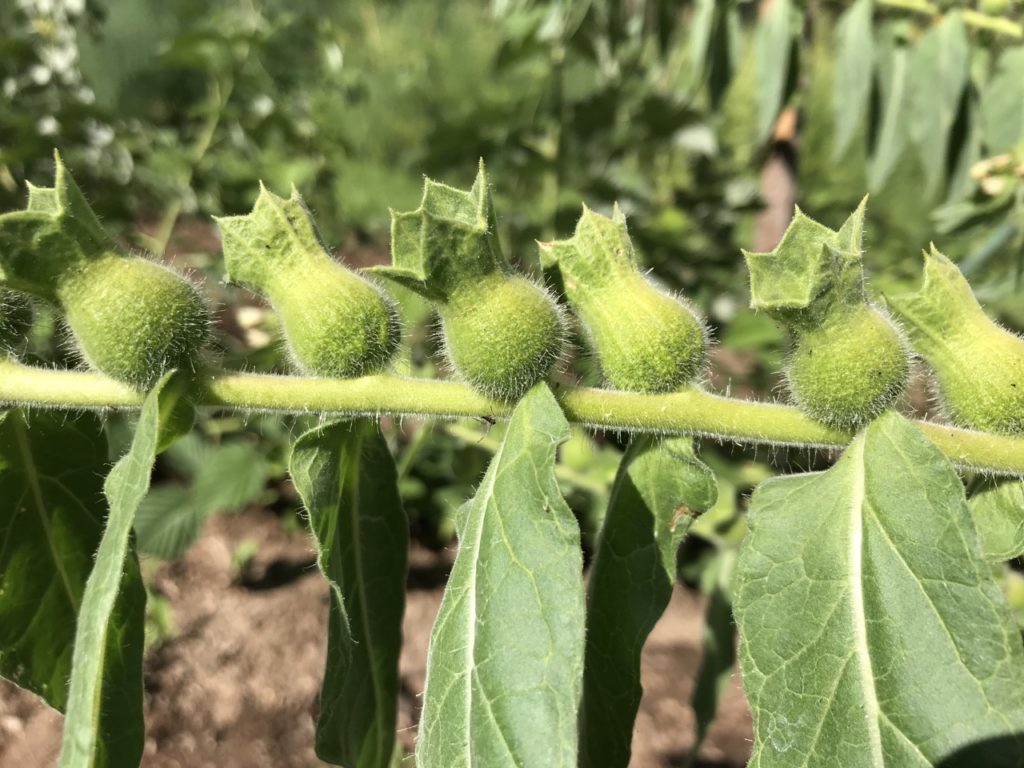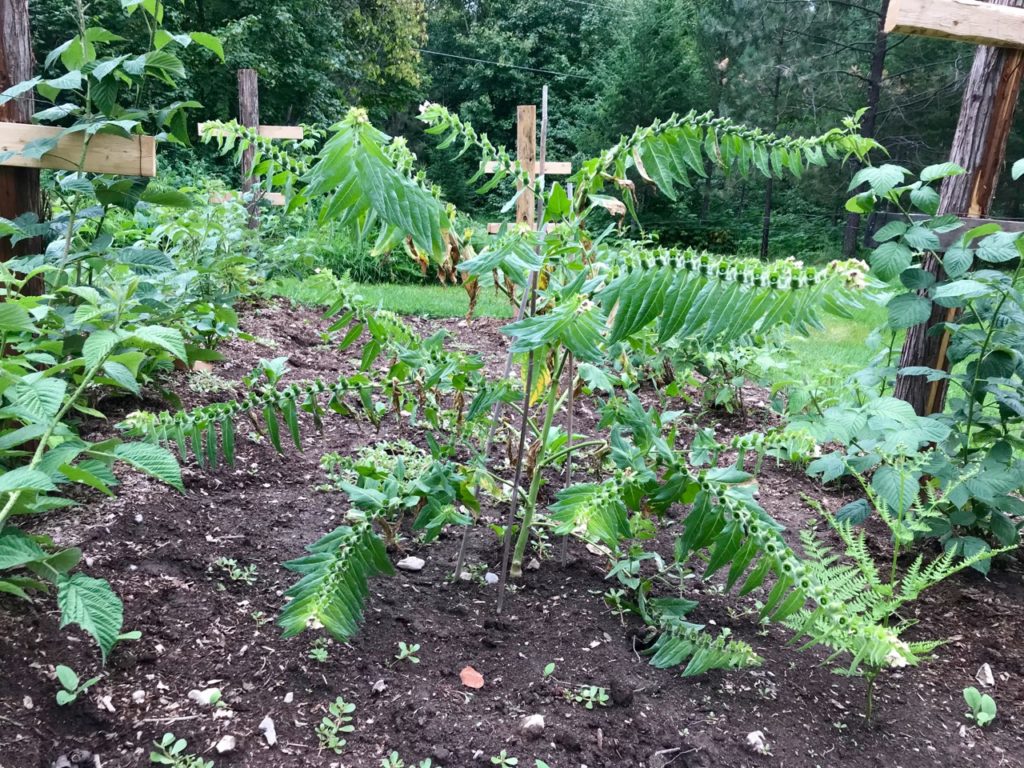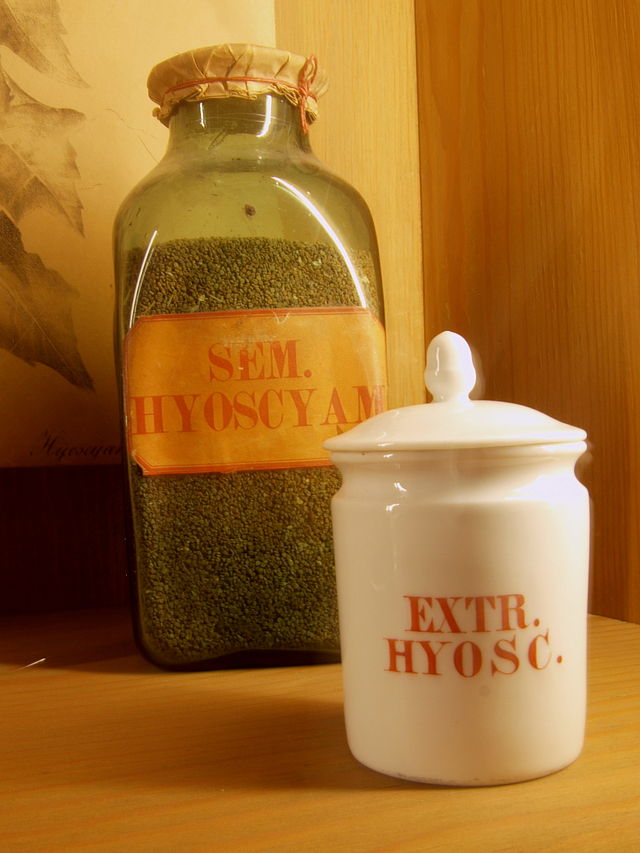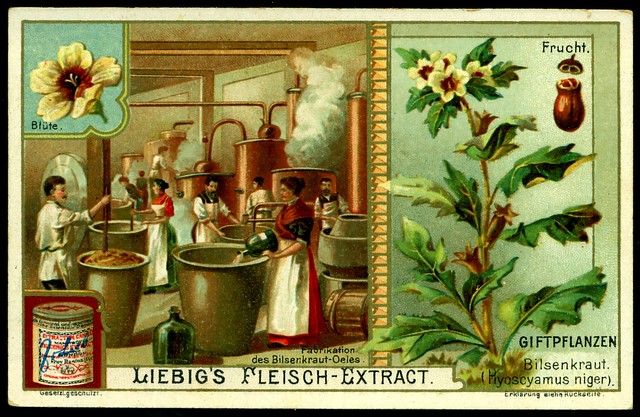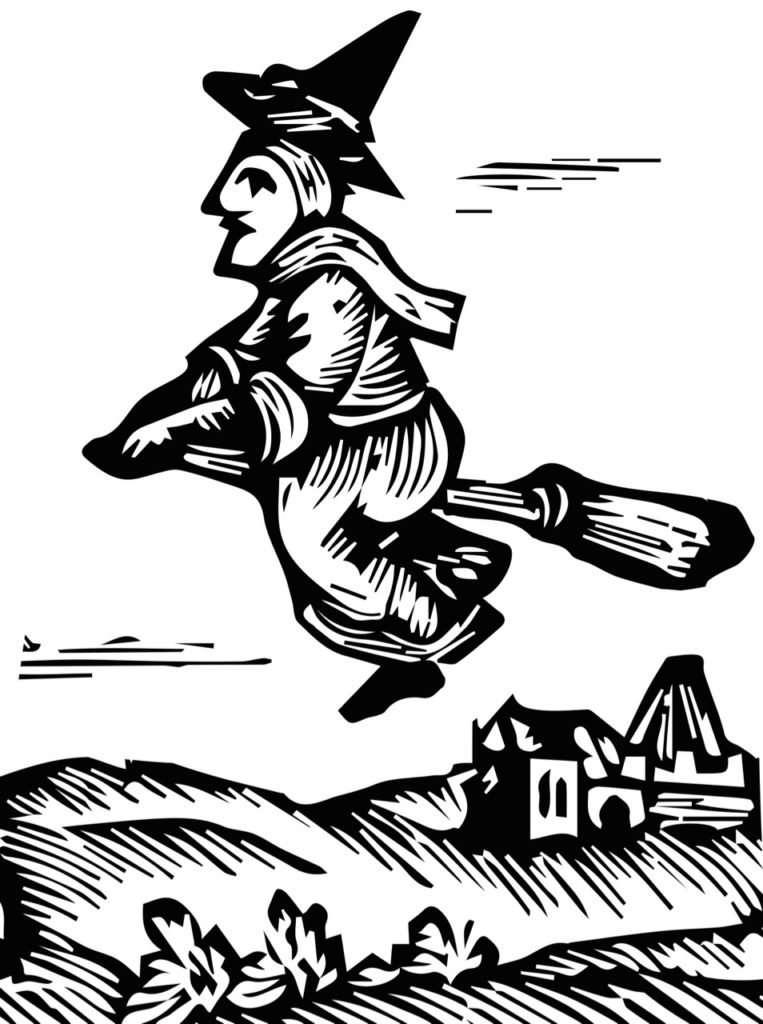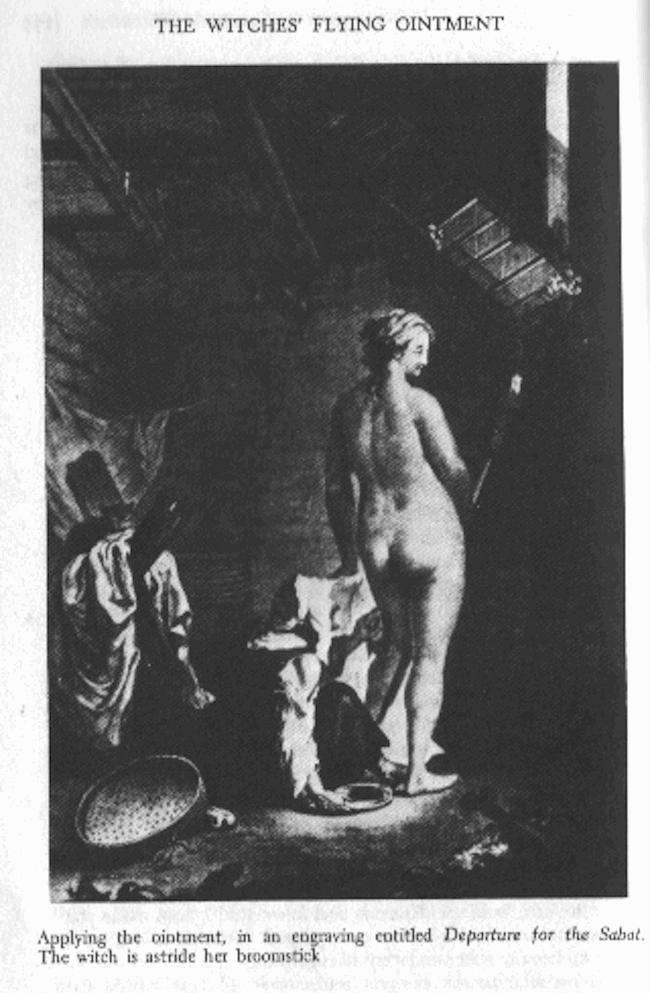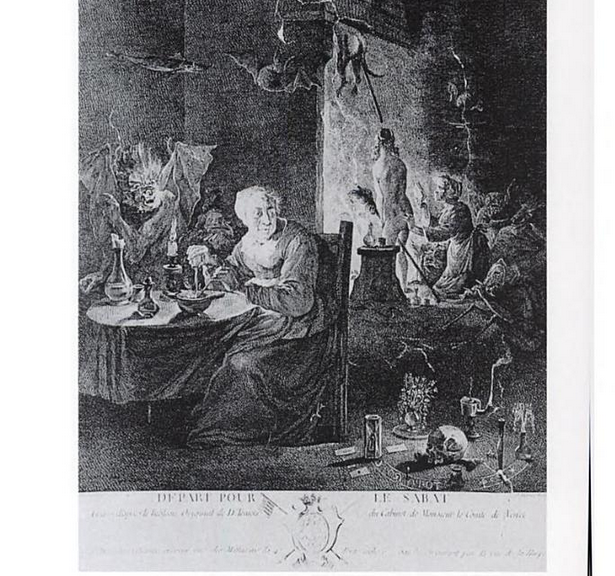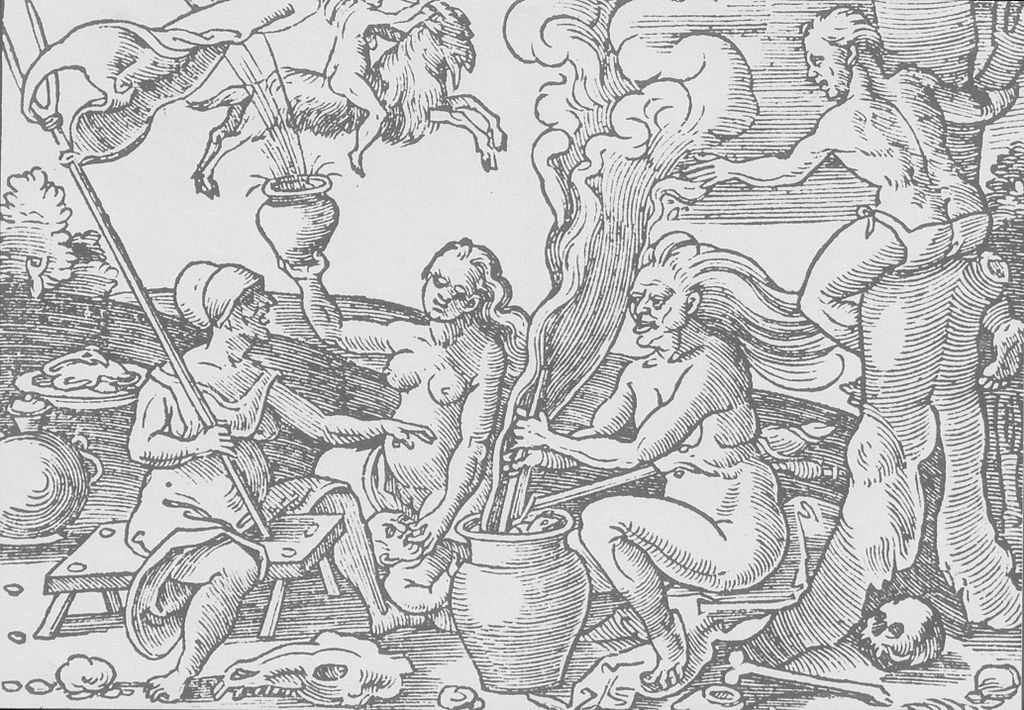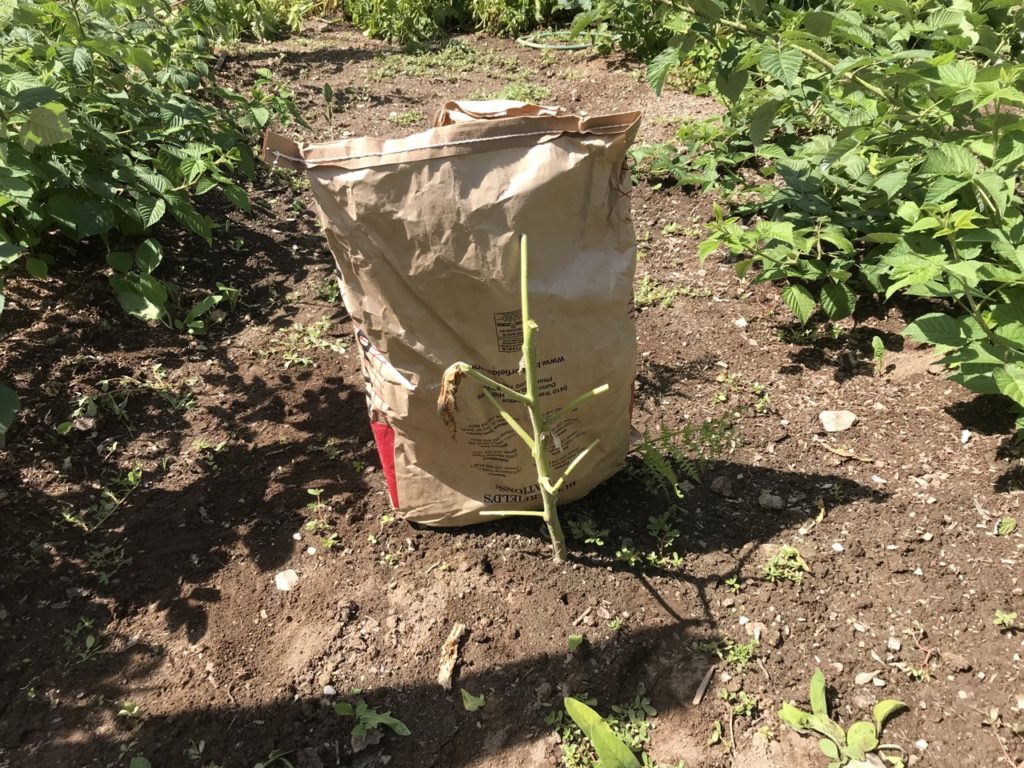The first photo taken of the mysterious plant discovered in our new garden
This spring we brought in a small excavator to create a new raspberry patch below our largest vegetable garden, which involved spreading a long, massive mound of dirt that was created from piling weeds over a few decades. When it came time to do the first weeding, I discovered some strange looking plants and after pulling most of them, I decided to identify one using a phone app.
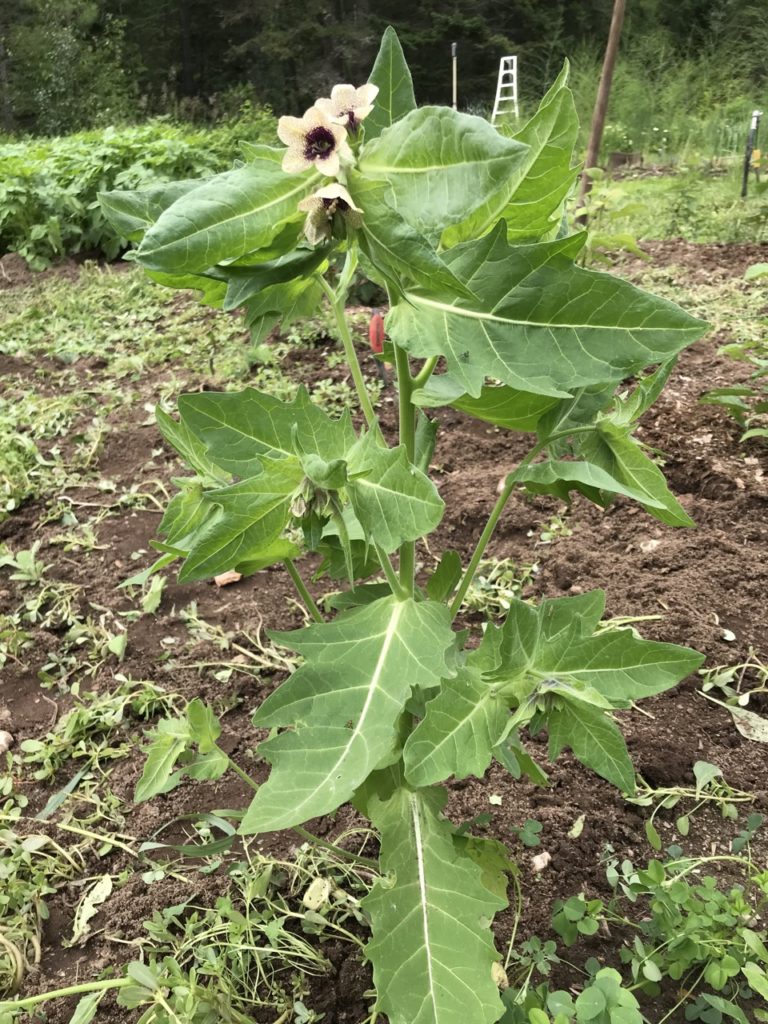 This is the photo that the plant app identified as black henbane
This is the photo that the plant app identified as black henbane
It turned out to be poisonous black henbane (Hyoscyamus niger), which is considered an invasive plant that is a problem in Alberta, but has only been found in five locations in British Columbia. We have no idea how the plant arrived on our property and thus consider its existence here a local botanical phenomenon. Although I was advised by the B.C. Invasive Species Council to pull it immediately, I carefully let it first grow to maturity to observe it, but I made sure all the seedpods remained on the plant.
As it grew, a number of branches formed with flowers at the tip
Watching it grow and mature was fascinating, as it is indeed both a beautiful and yet frightening looking plant. Growing from a single taproot, there were a series of branches covered in glandular hairs with alternately arranged leaves and attractive yellow and brown flowers at the tips that turn into seed pods, with five sharp pointed petals that could deter animals from eating one.
Numerous seed pods developed from the blossoms on each branch
The plant is also called stinking nightshade and reputedly smells like rotten meat, however our specimen had no discernable odor. After growing to over a metre tall, it stopped flowering and dried out. Soon it will be burned in a barrel once the hot, dry weather ends.
When it grew larger, the plant looked more frightening
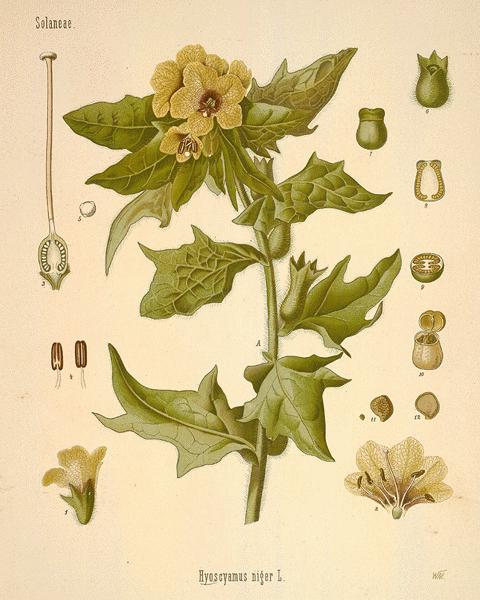 Hyoscyamus niger in Köhler’s Medicinal Plants, 1887
Hyoscyamus niger in Köhler’s Medicinal Plants, 1887
There is a wealth of information about the plant on the Internet, as it has a long history dating as far back as the ancient Greeks and Romans, when doctors prescribed it as a sedative or for pain relief. As well, priestesses of the Delphic oracle breathed henbane smoke to serve as soothsayers. Even Shakespeare referred to it in Hamlet, “Upon my secure hour thy uncle stole, with juice of cursed hebenon in a vial…”
Another traditional use of the herb was as a flavouring for beer in Bavaria until it was replaced by hops in the sixteenth century when the Bavarian Purity Law outlawed any ingredients other than barley, hops, yeast and water. Henbane seeds have also been found in Viking graves, and may have been used to induce a rage state for warriors.
Native to the Mediterranean, the plant spread throughout Europe and was brought to North America by colonists. Much of the lore surrounding henbane is due to its hallucinogenic qualities, as all parts of the plant contain 34 alkaloids, including atropine, hyoscyamine and scopolamine. These chemicals, which depress nervous systems by interfering with neuron receptors help to defend the plant from browsing by herbivores.
Perhaps the most well known history of henbane was its use by witches in the middle ages, who combined it with other herbs to produce visions of flying, thus providing us with the folklore of flying witches on a broomstick. One theory is that the leaves were ground into a salve and applied with the broomstick to areas of the body with thin skin, such as the genitalia or armpits. In modern day trials, subjects have reported they experienced a sensation of flying, as well as giddiness, visions of grimacing animals and flaring flights of madness.
A 17th-century wood engraving of a “witch” being prepared for “flight” (Wellcome Institute, London, via John Mann) From The Atlantic
It certainly is not recommended to experiment with consuming the plant, given that an overdose can lead to immediate, horrific and painful death. The alkaloids can over-stimulate the nervous system leading to convulsions, heart arrhythmia, apnea and coma. Yet despite these dangers, the plant has long been used for its medicinal properties and is viewed by researchers as a source for new drugs. Currently, extracts are used to treat respiratory illnesses, motion sickness and Parkinson’s disease.
Also used as a homeopathic medicine, and the oil can be purchased in pharmacies in some countries
 There are already too many invasive weeds to deal with in the Shuswap, including knapweed, common tansy, purple loosestrife, and hawkweed. The Invasive Species Council is currently working with a team to control an infestation of black henbane near Alexis Creek, due in part to the threat it poses to livestock. Thus, it would be good to know if anyone has seen the plant locally, given its mysterious appearance on our property.
There are already too many invasive weeds to deal with in the Shuswap, including knapweed, common tansy, purple loosestrife, and hawkweed. The Invasive Species Council is currently working with a team to control an infestation of black henbane near Alexis Creek, due in part to the threat it poses to livestock. Thus, it would be good to know if anyone has seen the plant locally, given its mysterious appearance on our property.
POSTSCRIPT
A book could be written on this topic, as the more one finds to read about it and the more videos one can watch, the more new information one learns. It is no wonder there is so much information available, as the plant has been in use since Egyptian times and there are references in ancient Greek texts. For example in the first century A.D. Greek physician Dioscorides recommended henbane “to allay pain and procure sleep.” Other common uses included treating obstinate rheumatic pains, gout, neuralgia and sciatica with oil made from the leaves.
For witchcraft, the henbane was combined with other nightshade plants including mandrake, datura, deadly nightshade and belladona. Interestingly, other common plants in the nightshade family include tobacco, potatoes, tomatoes, peppers and eggplants.
A 17th-century wood engraving of a “witch” being prepared for “flight” (Wellcome Institute, London, via John Mann) From The Atlantic
The derivation of the word henbane is thought to come from its reputation for killing poultry, as bane means death. Apparently just one seed can kill a chicken! One plant can produce up to a half-million seeds! Another derivation refers to “crazy plant.”
In addition to its use by witches to produce hallucinations of flying, it helped them to invoke the spirits of the dead and was used to make predictions. During a 1538 witchcraft trial in Germany, a witch confessed to giving a man henbane seeds to run around crazy and become sexually aroused!
 Witches flying to the Sabbath, Capricho No. 68 (Linda maestra – Pretty teacher) by Franciso Goya
Witches flying to the Sabbath, Capricho No. 68 (Linda maestra – Pretty teacher) by Franciso Goya
I could post some links to YouTube videos about henbane, but if you want to learn more just do a search as there are many!
Our henbane has been cut down and is in this used feed bag ready to burn
